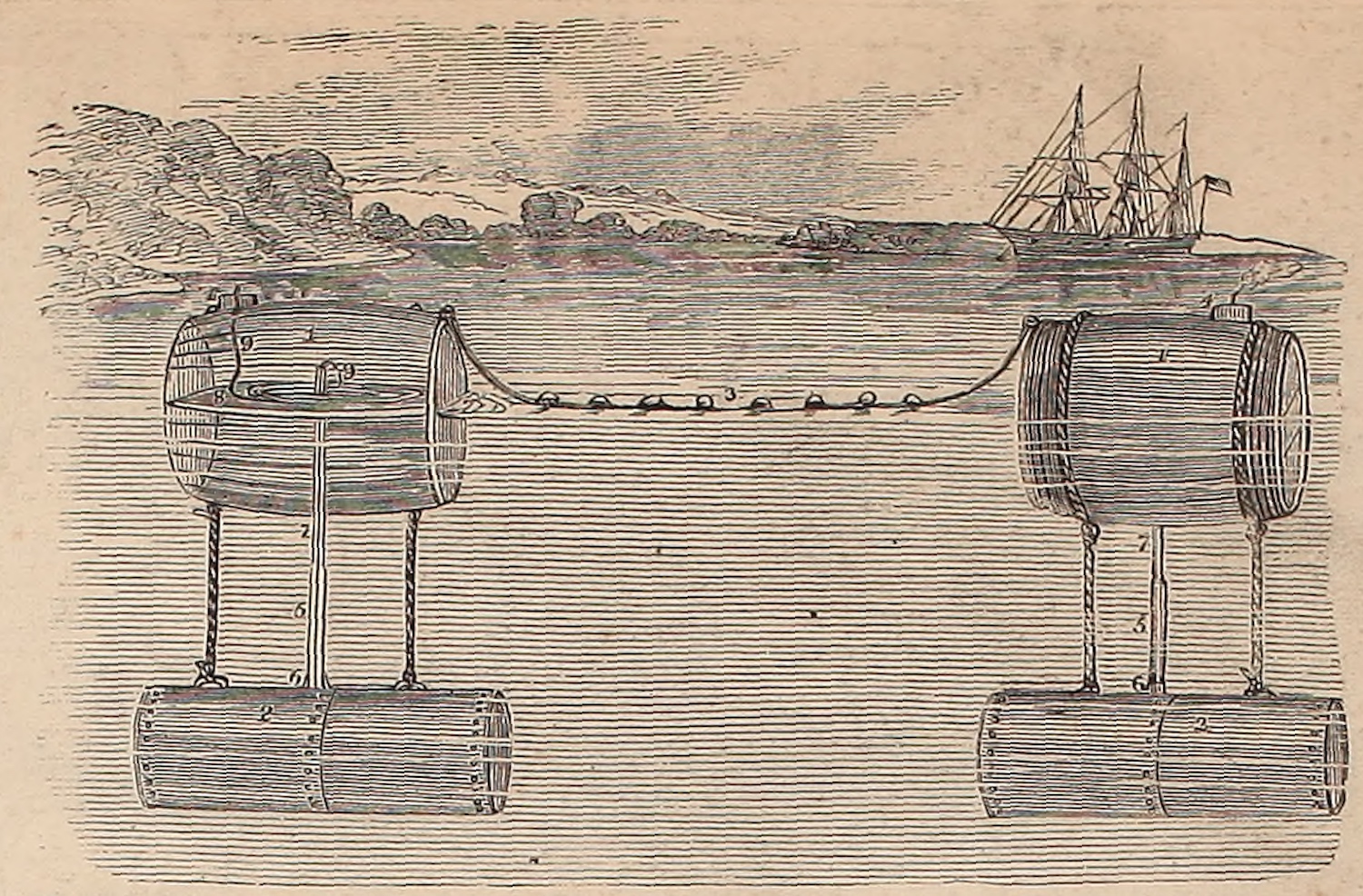In the July 27, 1861, issue of Harper’s Weekly, the editors published a small story about an “infernal machine” recently removed from the Potomac River near where the sloop-of-war USS Pawnee was patrolling off Washington, D.C. This torpedo, or mine, was one of many that would be employed throughout the waters of the South by the Confederacy as a means of defense against Union warships. It’s clear that the reporter who submitted the story did not have a postive view this new kind of warfare:
We publish on this page an engraving of the INFERNAL MACHINE lately discovered by the Pawnee. The correspondent who kindly sent us the sketch writes us as follows about it:
Washington, D.C., July 10, 1861.
The Pawnee, by the activity with which she has carried on the blockade of Virginia, and by the precision with which she has, on more than one occasion, thrown her nine-inch shell among the rebels, has given the secessionists a strong desire to cause her destruction. Feeling unable to subdue her by the rules of regular warfare, they resort to the Chinese expedient of torpedoes and infernal machines. The accompanying drawing is a correct representation of one of these instruments of destruction picked up in the Potomac, a few hundred yards from the Pawnee, on the evening of Sunday, 7th inst.
In the casks used for floating the iron cylinders were placed platforms on which were coiled the slow-matches for communicating fire to the fuses. The fuses connect with the cylinders, which are filled with powder. Had this machine drifted, as was intended, athwart the bows of the Pawnee, and there exploded, its destructive effects would indeed have been great.

REFERENCES.—No. 1. Large oil-casks, serving as buoys.—2. Iron boiler or bomb, 4 feet 6 inches long, 18 inches in diameter.—3. Rope 3 inches, with large pieces of cork at a distance of every 2 feet.—4. Box on top of cask, with fuse.—5. Gutta-percha tube fitting in to copper pipe—6. Brass tap on bomb.—7. Copper tube running through cask.—8. Wooden platform in centre of casks, in which fuse was coiled and secured.—9. Fuse.
